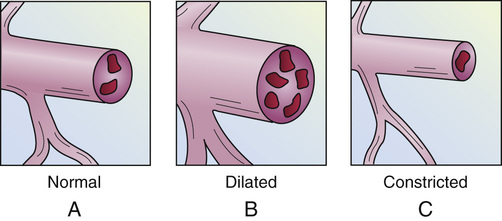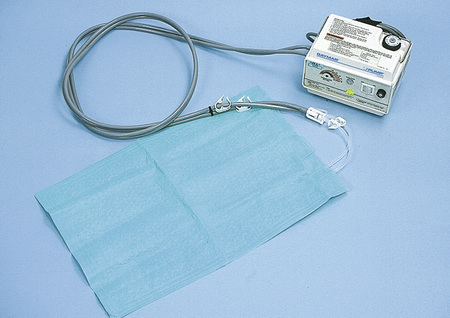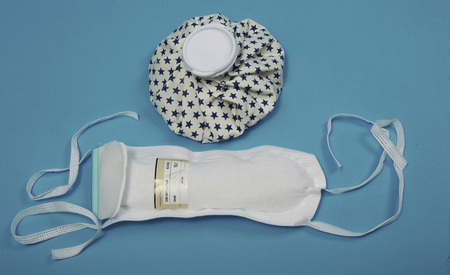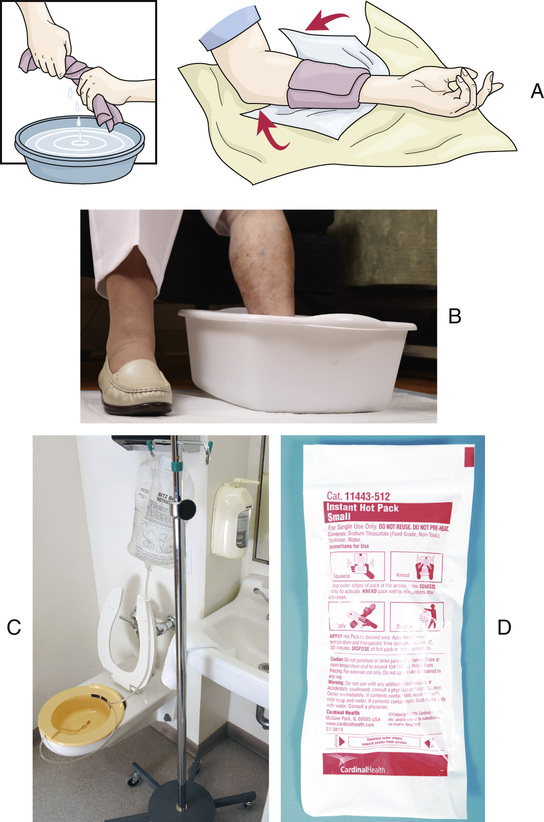Heat and Cold Applications
Objectives
• Define the key terms and key abbreviations in this chapter.
• Explain the purpose, effects, and complications of heat and cold applications.
• Identify the persons at risk for complications from heat and cold applications.
• Describe moist and dry heat applications.
• Describe moist and dry cold applications.
• Describe the rules for applying heat and cold.
• Explain how cooling and warming blankets are used.
• Perform the procedure described in this chapter.
• Explain how to promote PRIDE in the person, the family, and yourself.
Key Terms
Heat and cold applications:
Heat and cold have opposite effects on body functions. Severe injuries and changes in body function can occur. The risks are great.
Some agencies do not let nursing assistants apply heat or cold. Before you apply heat or cold, make sure that:
• Your state allows you to perform the procedure.
• The procedure is in your job description.
• You have the necessary training.
• You know how to use the equipment.
• You review the procedure with a nurse.
• A nurse is available to answer questions and to supervise you.
See Focus on Children and Older Persons: Heat and Cold Applications.
Heat Applications
Heat applications can be applied to almost any body part. They are often used for musculo-skeletal injuries or problems (sprains, arthritis). Heat:
When heat is applied to the skin, blood vessels in the area dilate. Dilate means to expand or open wider (Fig. 38-1). Blood flow increases. Tissues have more oxygen and nutrients for healing. Excess fluid is removed from the area faster. The skin is red and warm.

Complications
High temperatures can cause burns. Report pain, excess redness, and blisters at once. Also observe for pale skin. When heat is applied too long, blood vessels constrict (narrow) (see Fig. 38-1). Blood flow decreases. Tissues receive less blood. Tissue damage occurs and the skin is pale.
Older and fair-skinned persons have fragile skin that is easily burned. Persons with problems sensing heat and pain also are at risk. Nervous system damage, altered awareness, and circulatory disorders affect sensation. So do confusion and some drugs.
Metal implants pose risks. Metal conducts heat. Deep tissues can be burned. Pacemakers (cardiac devices) and joint replacements are made of metal. Do not apply heat to an implant area.
Heat is not applied to a pregnant woman’s abdomen. The heat can affect fetal growth.
Moist and Dry Heat Applications
With a moist heat application, water is in contact with the skin. Water conducts heat. Moist heat has greater and faster effects than dry heat. Heat penetrates deeper with a moist application. To prevent injury, moist heat applications have lower (cooler) temperatures than dry heat applications. Moist heat applications (Fig. 38-2) include:
• Hot compress. A compress is a soft pad applied over a body area. It is usually made of cloth. Sometimes an aquathermia pad (p. 636) is applied over the compress to maintain the temperature of the compress.
• Sitz bath. The perineal and rectal areas are immersed in warm or hot water. (Sitz means seat in German.) Sitz baths are common for hemorrhoids, after rectal or female pelvic surgeries, and after childbirth. They are used to:
• Clean perineal and anal wounds
• Hot pack. A pack involves wrapping a body part with a wet or dry application. There are single-use (disposable) and re-usable packs. Some are used for heat or cold. Follow the manufacturer’s instructions to activate the heat or cold. To clean re-usable packs, follow agency policy and the manufacturer’s instructions.
With dry heat applications, water is not in contact with the skin. A dry heat application stays at the desired temperature longer. Dry heat does not penetrate as deep as moist heat. Because water is not used, dry heat needs higher (hotter) temperatures for the desired effect. Therefore burns are still a risk.
Some hot packs and warming therapy pads are dry heat applications. The aquathermia pad (Aqua-K, K-Pad) is a common therapy pad (Fig. 38-3). Tubes inside the pad are filled with distilled water. Heated water flows to the pad through a hose. Another hose returns water to the electric heating unit. Reheated water flows back into the pad.

See Focus on Long-Term Care and Home Care: Moist and Dry Heat Applications.
Cold Applications
Cold applications are often used to treat sprains and fractures. Cold applications:
Cold has the opposite effect of heat. When cold is applied to the skin, blood vessels constrict (see Fig. 38-1). Blood flow decreases. Tissues receive less oxygen and nutrients.
Cold applications are useful right after an injury. Decreased blood flow reduces bleeding. Less fluid collects in the tissues. Cold has a numbing effect on the skin. This helps reduce or relieve pain in the part.
Complications
Complications include pain, burns, blisters, and poor circulation. Burns and blisters occur from intense cold. They also occur when dry cold is in direct contact with the skin.
When cold is applied for a long time, blood vessels dilate. Blood flow increases. Prolonged application of cold has the same effect as heat applications.
Older and fair-skinned persons have fragile skin. They are at great risk for complications. So are persons with sensory impairments.
Moist and Dry Cold Applications
Moist cold applications penetrate deeper than dry ones. Therefore moist cold applications are warmer than dry cold applications.
The cold compress is a moist cold application (see Fig. 38-2, A). Dry cold applications include ice bags, ice collars, and ice gloves (Fig. 38-4). The device is filled with crushed ice.

Cold packs can be moist or dry applications (see Fig. 38-2, D). Commercial cold packs are single-use (disposable) or re-usable. To activate the cold, follow the manufacturer’s instructions. You will strike, knead, or squeeze the pack. Keep re-usable cold packs in the freezer. Clean them after use. Discard single-use cold packs after use.
See Focus on Long-Term Care and Home Care: Moist and Dry Cold Applications.
 Applying Heat and Cold
Applying Heat and Cold
Protect the person from injury during heat and cold applications. Follow the rules in Box 38-1. See Table 38-1 for heat and cold temperature ranges.




